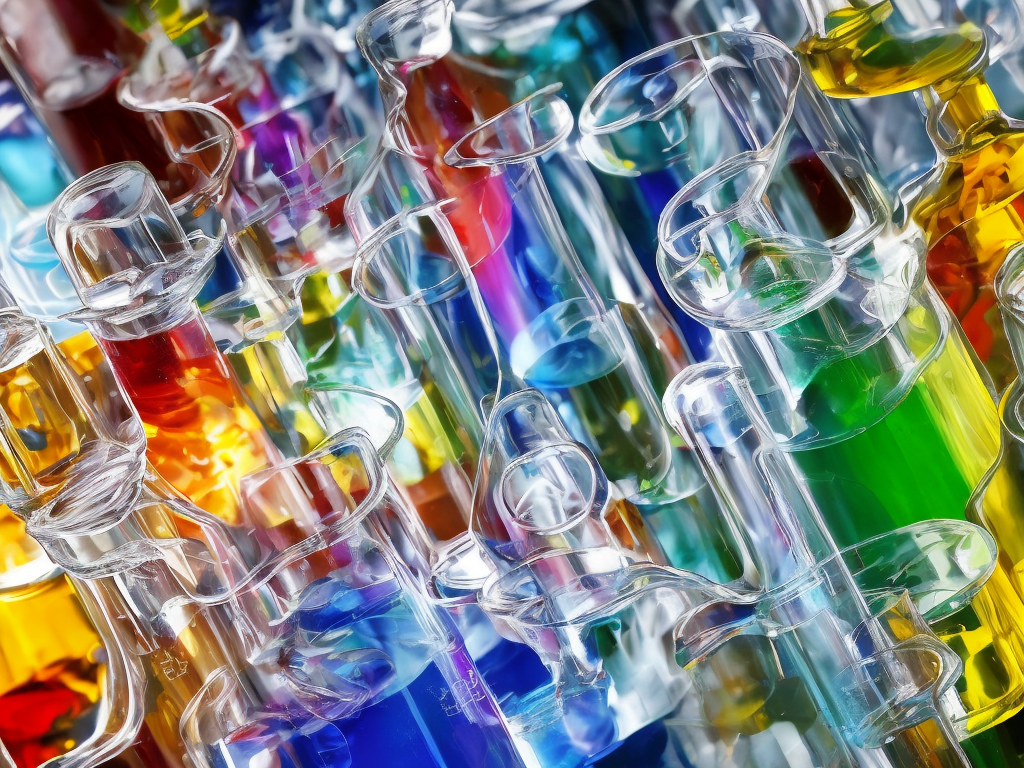
Ethanol and ethanoic acid are organic compounds that contain the functional group "alcohol" and "carboxylic acid," respectively. Despite having similar chemical structures, they have different physical and chemical properties. Ethanol is a clear, colorless liquid that is volatile and flammable. It is used as a solvent, fuel, and disinfectant. On the other hand, ethanoic acid is a colorless liquid with a pungent odor. It is used as a preservative, cleaning agent, and food additive. In this essay, we will discuss the differences between ethanol and ethanoic acid in terms of their molecular structure, physical properties, chemical reactions, and practical applications.
Molecular Structure
Ethanol, also known as ethyl alcohol, is a two-carbon alcohol with the formula CH3CH2OH. The molecule consists of two parts: the hydroxyl group (-OH) and the ethyl group (-CH2CH3). The hydroxyl group makes ethanol an alcohol, which is responsible for its solubility in water and other polar solvents. The ethyl group, on the other hand, is a nonpolar group that contributes to the molecule's nonpolarity.
Ethanoic acid, also known as acetic acid, is a two-carbon carboxylic acid with the formula CH3COOH. It contains two functional groups: the carboxyl group (-COOH) and the methyl group (-CH3). The carboxyl group is responsible for the acidity of the molecule and its reactivity toward other compounds. The methyl group contributes to the molecule's nonpolarity.
Physical Properties
Ethanol is a colorless liquid with a boiling point of 78.37°C and a melting point of -114.1°C. It has a density of 0.789 g/mL and is miscible with water and many organic solvents. Ethanol is highly flammable and produces a blue flame when burned.
Ethanoic acid is a colorless liquid with a boiling point of 118.1°C and a melting point of 16.6°C. It has a density of 1.049 g/mL and is miscible with water and many organic solvents. Ethanoic acid is highly corrosive and can cause severe burns if it comes into contact with the skin.
Chemical Reactions
Ethanol can undergo various chemical reactions, such as oxidation, esterification, dehydration, and halogenation. One of the most common reactions of ethanol is oxidation, which can be catalyzed by various oxidizing agents, such as potassium permanganate, chromic acid, and hydrogen peroxide. The main product of ethanol oxidation is ethanal, also known as acetaldehyde, which can further oxidize to form ethanoic acid.
Another reaction of ethanol is esterification, which involves the reaction of ethanol with a carboxylic acid to form an ester and water. For example, the reaction of ethanol with ethanoic acid forms ethyl ethanoate, also known as ethyl acetate, which is commonly used as a solvent and a flavoring agent.
Dehydration is another reaction of ethanol, which involves the removal of a water molecule from the ethanol molecule. This reaction produces ethene, also known as ethylene, which is used for various industrial applications, such as the production of polyethylene.
Halogenation is a reaction of ethanol that involves the substitution of a hydrogen atom with a halogen, such as chlorine or bromine. This reaction is used to prepare halogenated organic compounds, which are used as solvents, disinfectants, and pesticides.
Ethanoic acid is a weak acid that can undergo various chemical reactions, such as neutralization, esterification, and decarboxylation. One of the most common reactions of ethanoic acid is neutralization, which involves the reaction of ethanoic acid with a base to form a salt and water. For example, the reaction of ethanoic acid with sodium hydroxide forms sodium ethanoate and water.
Esterification is another reaction of ethanoic acid, which involves the reaction of ethanoic acid with an alcohol to form an ester and water. For example, the reaction of ethanoic acid with ethanol forms ethyl ethanoate, which is commonly used as a solvent and a flavoring agent.
Decarboxylation is a reaction of ethanoic acid that involves the removal of a carboxyl group from the molecule. This reaction produces carbon dioxide and an alkane or an alkene. For example, the decarboxylation of ethanoic acid produces methane and carbon dioxide.
Practical Applications
Ethanol and ethanoic acid have various practical applications in different industries, from fuel production to food preservation. Ethanol is commonly used as a fuel for vehicles, as it is renewable and produces lower carbon emissions than gasoline. It is also used as a solvent, a disinfectant, and a cleaning agent in different industries, such as pharmaceuticals, cosmetics, and electronics.
Ethanoic acid is commonly used as a food preservative and a flavoring agent in the food industry. It is also used as a cleaning agent and a solvent in different industries, such as textiles, plastics, and rubber. Moreover, ethanoic acid is used in the production of various organic compounds, such as acetone, acetic anhydride, and vinyl acetate.
In conclusion, ethanol and ethanoic acid are organic compounds that have similar chemical structures but different physical and chemical properties. Ethanol is a volatile and flammable liquid that is used as a solvent, fuel, and disinfectant. Ethanoic acid is a pungent and corrosive liquid that is used as a preservative, cleaning agent, and food additive. Both compounds have various practical applications in different industries, from fuel production to food preservation. Understanding the differences between ethanol and ethanoic acid is important for their proper handling and use in different applications.
 Self-Instruct
Self-Instruct